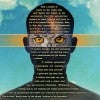
Rice to host international conference on scholarship of the paranormal March 3-6
“Opening the Archives of the Impossible” will also showcase collections housed in university library

Rice to host international conference on scholarship of the paranormal March 3-6
“Opening the Archives of the Impossible” will also showcase collections housed in university library

Rice Shepherd School alumna picks up first Oscar nomination
Germaine Franco is going for gold — a gold-plated Oscar, that is.

Richard Baraniuk named to National Academy of Engineering
Rice University engineer, OpenStax founder Richard Baraniuk is named a member of the National Academy of Engineering.
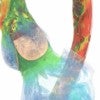
Clearly, this heart beats strong
In time for Valentine’s Day, engineers at Rice University and Waseda University provide a realistic view of what happens inside a beating heart.
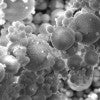
Rare earth elements await in waste
Rice University scientists applied their flash Joule heating process to coal fly ash and other toxic waste to safely extract rare earth elements essential to modern electronics and green technologies.

Anastasios Kyrillidis wins NSF CAREER Award
Rice computer scientist will explore the theory and design of non-convex optimization algorithms, which are increasingly important for machine learning.
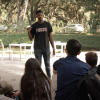
Young alum shares power of poetry to promote critical dialog
Tim Harrison ’20 brought a powerful spoken-word performance to campus for a FWIS class
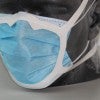
Rice team’s mask strategy passes muster
During the early stages of the COVID-19 pandemic, a team at Rice University went looking for and found a way to make standard surgical masks better at keeping out small airborne droplets that might contain the SARS-CoV-2 virus.
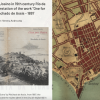
imagineRio allows users to visualize five centuries of change in a modern megacity
Major rebuild to the Rice site adds 3,000 photos, new tools for teaching, learning

Rice Architecture alums Super satisfied with their new venue
Two Rice Architecture alums were part of the team that designed SoFi Stadium, the spectacular site of this year’s Super Bowl.

Matthew Jones wins NSF CAREER Award
Rice chemist Matthew Jones wins an NSF CAREER Award to study controlled growth of metallic nanoparticles for biomedicine, energy storage and computing.
Islamic studies scholar Doostdar contemplates God and Satan in modern Shi’i thought
University of Chicago professor to deliver Feb. 17 Kazimi Lecture

Nathan Dautenhahn wins CAREER Award
Rice University computer scientist Nathan Dautenhahn wins a National Science Foundation CAREER Award to pursue simplified, automated security for sophisticated software.

Machine learning fine-tunes flash graphene
Rice University scientists are using machine learning techniques to streamline the process of synthesizing graphene from waste through flash Joule heating.

Pastors serve as primary source of mental health care for Black, Latino congregants
A new study of Black and Latino Christians found they often turn to their pastors for mental health care or information on mental health resources, even when those clergy feel ill-equipped to offer help or advice.